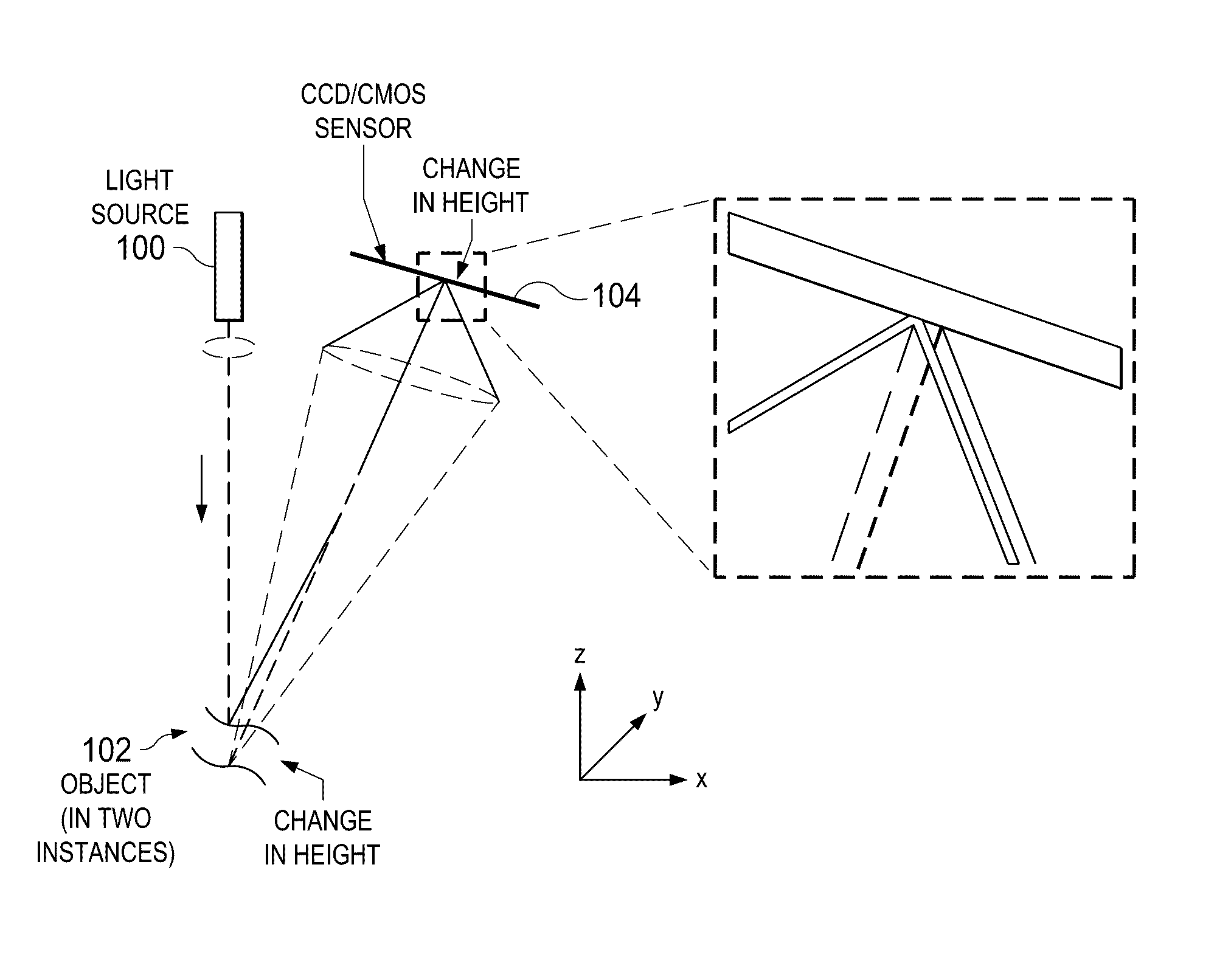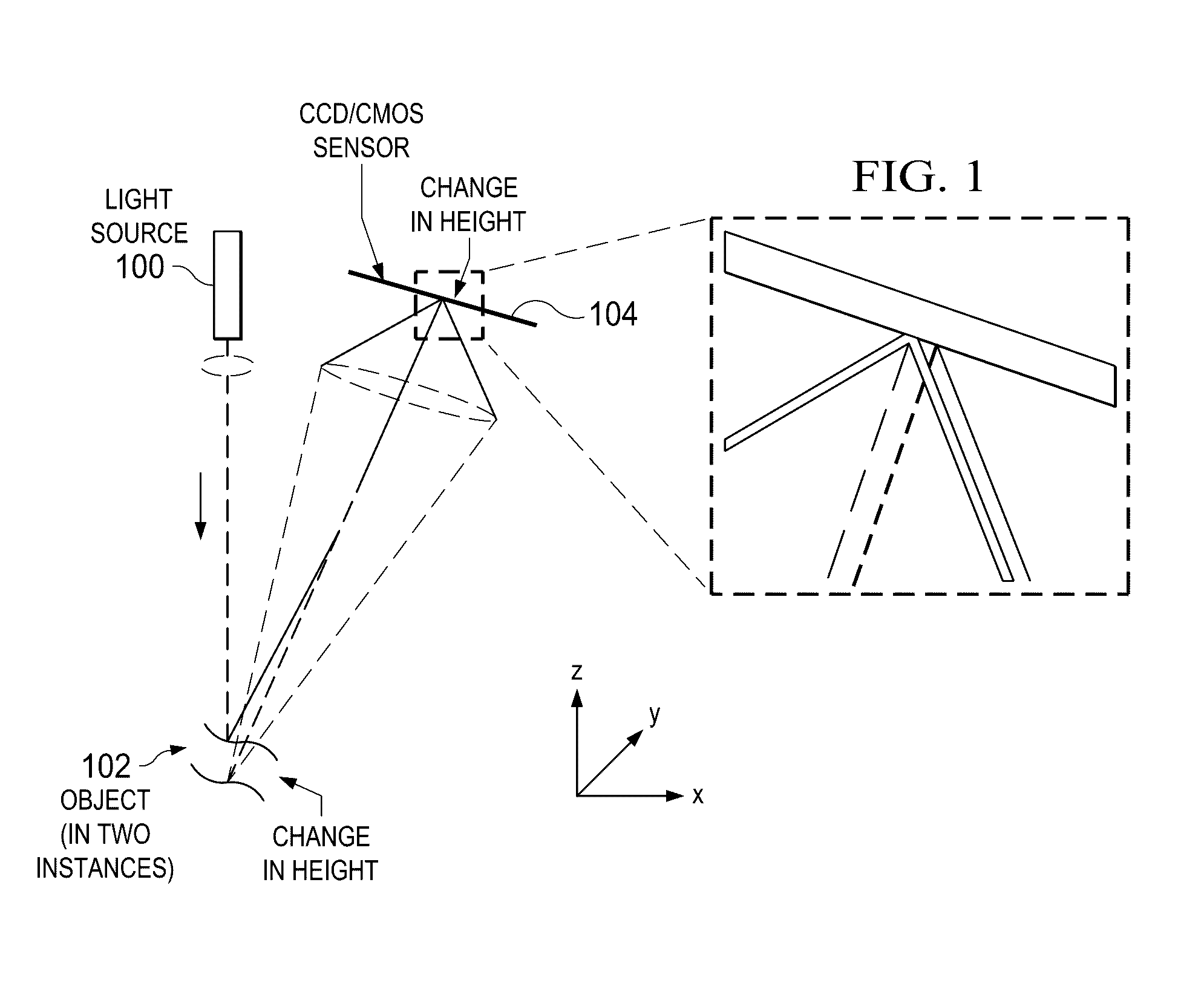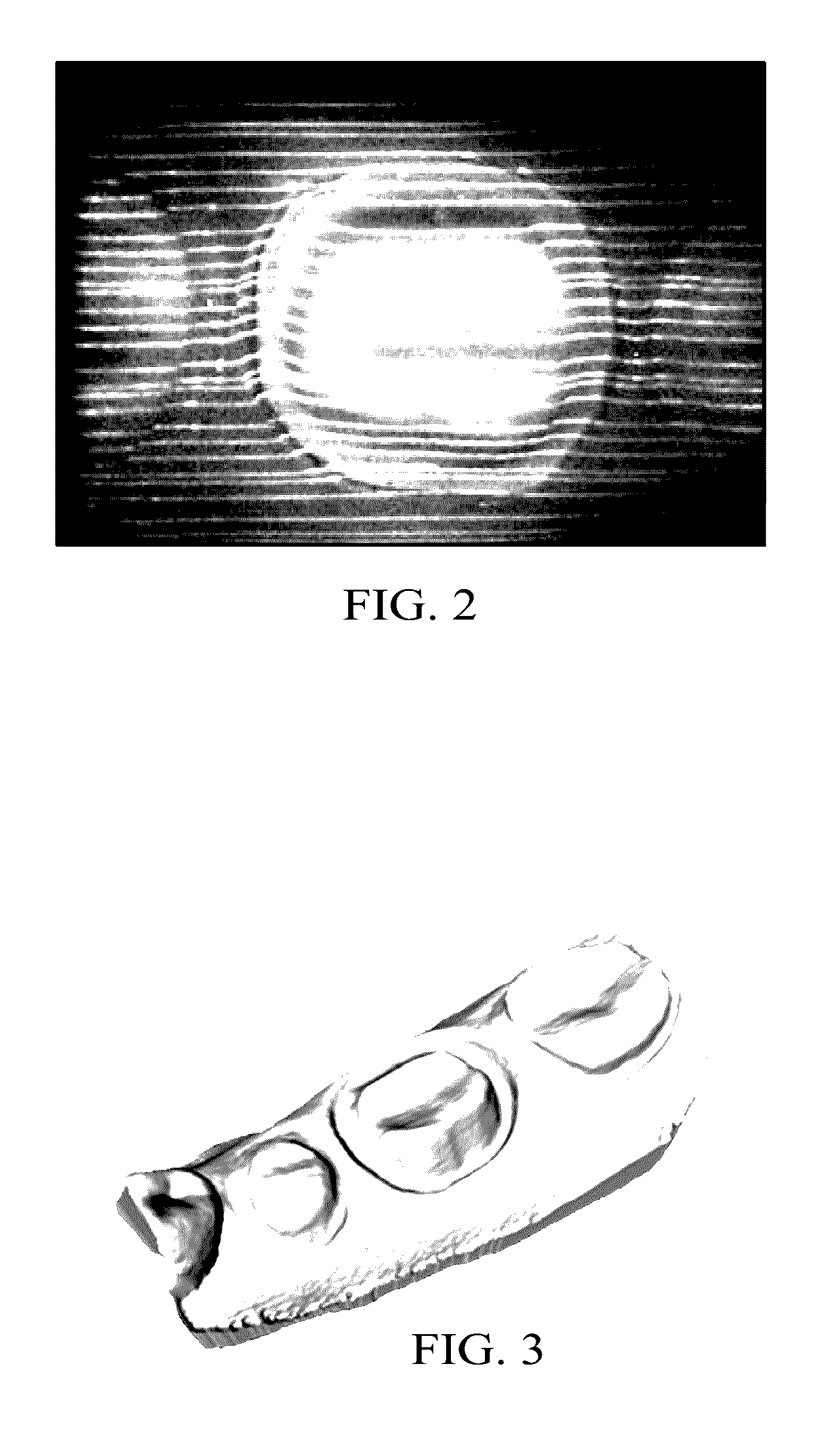Real-time detail highlighting on 3D models
a 3d model and detail technology, applied in the field of dental restorations, can solve the problems of inability to accurately and inability to accurately identify the teeth, etc., and achieve the effect of improving contrast and detail, facilitating inspection, and reducing the difficulty of the patien
- Summary
- Abstract
- Description
- Claims
- Application Information
AI Technical Summary
Benefits of technology
Problems solved by technology
Method used
Image
Examples
Embodiment Construction
[0024]The principles behind structured light based 3D triangulation are explained in various works. The underlying principles are described with respect to FIG. 1, which illustrates a light source 100 directed to an object 102, with the reflection being captured a charge coupled device (CCD) imaging surface 104. This illustrates the basic components and principles behind 3D triangulation in an intuitive manner. In this approach, a change in height due to object topography is registered as a deviation of a projected point onto a charge coupled device (CCD) imaging surface. In operation, a laser pattern is projected with the help of an LCOS (i.e. liquid crystal on silicon) device. In particular, a sequence of a set of lines is generated by the lines reflected from LCOS to form a set of planes, or, if distortion is involved (as typically is the case when implemented), a set of conical or ruled surfaces.
[0025]FIG. 2 illustrates a pattern projected onto a preparation area. In an analogou...
PUM
 Login to View More
Login to View More Abstract
Description
Claims
Application Information
 Login to View More
Login to View More - R&D
- Intellectual Property
- Life Sciences
- Materials
- Tech Scout
- Unparalleled Data Quality
- Higher Quality Content
- 60% Fewer Hallucinations
Browse by: Latest US Patents, China's latest patents, Technical Efficacy Thesaurus, Application Domain, Technology Topic, Popular Technical Reports.
© 2025 PatSnap. All rights reserved.Legal|Privacy policy|Modern Slavery Act Transparency Statement|Sitemap|About US| Contact US: help@patsnap.com



